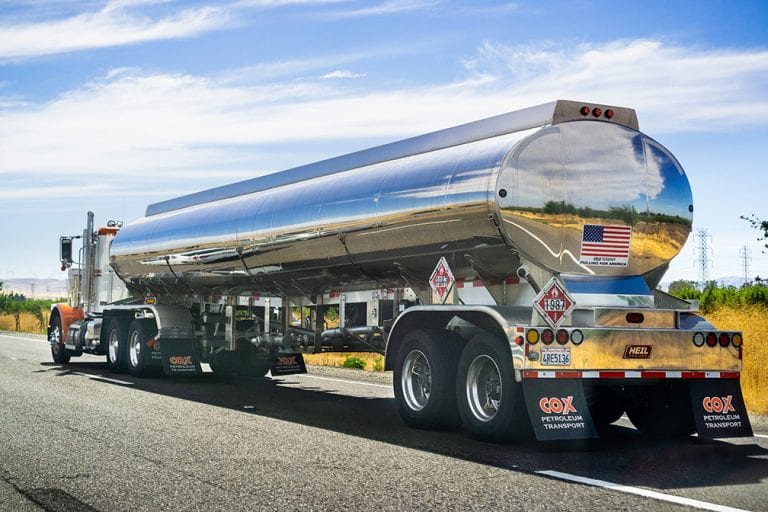As if the disruption of the Colonial Pipeline caused by a ransomware attack wasn’t bad enough, many of those in the states affected by the disruption began panic-buying gas. This has placed a strain on the transportation of fuel to not only the states affected by the pipeline, but also other areas of the country.
Combine this with the major traffic disruption with the closing of the Interstate 40 bridge (link) spanning the Mississippi River between Arkansas and Tennessee, and the tanker truck industry is experiencing what might seem to be a perfect — and unfortunate — storm. This has prompted the shortage of drivers to take center stage as the nation’s attention turns to a single topic: fuel.
Industry leaders are warning that the years-long driver shortage in the tanker truck industry is likely to hit home for millions of Americans in a very personal way this summer, as families prepare for vacation trips and taking one more step toward pre-pandemic normalcy.
In early May, national news outlets reported what industry professionals have long known: Lack of drivers will likely mean higher prices and even shortages of gas, chemicals and food components hauled by tankers.
Holly McCormick, vice president of the talent office for Oklahoma-based Groendyke Transport, said the headlines “screaming” about gas shortages only tell part of the story.
“The sensationalism the headlines spun up was, ‘Oh my God! Now we can’t have summer vacation because we’re not going to be able to get gas,’” she said. “I want to mention that it’s bigger than gas, although that’s what’s getting the headlines right now.
“We also haul a lot of chemicals that go into building products, makeup, soaps and hand sanitizers. It’s jet fuel, too. I mean, all kinds of things, anything and everything you can imagine,” she continued. “It’s not a supply issue, it’s the ability to transport it.”
Groendyke, which runs tankers exclusively through the lower 48 United States, Canada and Mexico, employs 865 drivers at present. But if afforded the chance, McCormick said the company would add to that number substantially just to meet current demand.
“I could employ an additional 150 drivers without even blinking an eye,” she said. “That’s just current business capacity. There is more business available that we can’t even consider, at this point.”
Other trucking companies are in the same boat, even if they don’t haul fuel, including J&M Tank Lines of Birmingham, Alabama. Eric Hanson, J&M’s vice president of human resources, said he’d put on 50 more drivers immediately to join the 400 already in service if he could.
“It’s hard, you know,” Hanson said. “We have more freight than we can handle because we’ve got customers coming out of the woodwork, wanting us to haul all of their loads. The opportunity is there. and it becomes frustrating when you can’t service customers at the level you’re used to doing.
“Trucking is a low-margin business, and when the opportunity is there, you always want to be able to seize the moment,” he added. “Having so much opportunity and not enough resources to capture it all, I think, is the main cause of stress in the industry right now.”
Driver shortages in general have plagued trucking companies for years, but tanker trucking is arguably the most vulnerable segment of the transportation industry. McCormick said tanker trucks make up the smallest percentage of rigs on the road, yet account for one-third of the total tonnage hauled.
National Tank Truck Carriers (NTTC) reported through national news outlets that year over year, the number of parked rigs has grown by 15% to now include a quarter of all tanker trucks. And analysts are quick to point out that what’s coming in the summer vacation season is only going to get worse.
“This is just getting started,” Phil Flynn, senior executive and market analyst of the Price Futures Group, told FOX Business on May 5. “We’re seeing this huge surge in demand. People want to go on vacation and vacation areas could be the hardest hit.”
There’s not one root cause of the shortages. Retirement of aging drivers is one drain on numbers, as are the stimulus checks and enhanced unemployment payments that have kept people at home instead of on the job — whether that job is behind the wheel or somewhere else.
What’s more, tanker truck drivers face more training and certification requirements than their peers driving other rigs. The licensing and certification process can take up to six months, during which time tank truck drivers must get their CDL and various other credentials.
“Our drivers have to have tanker endorsements, hazmat endorsements. The majority of our chemical drivers are also required to have a TWIC, which is the transportation workers information card that is required for ports of entry,” McCormick said.
Another hurdle is, simply put, that tanker truck driving isn’t for everyone, according to Bailey Glendenning Stark, CEO of Illinois-based Glendenning Brothers Inc. A small, family-owned operation, Glendenning Brothers’ fleet of 10 tankers hauls food-grade products.
“Tanker is very specialized,” she said. “One of the problems that we encounter with that is we get people who come out of vans who don’t like liquid, they’re not used to the (load) movement. They’ve not learned how to accommodate the shift and they don’t like it. Or they’re like, ‘Oh gosh, I’m going to have to do hazmat.’ They’re afraid of it.
“Plus, with tanker we do the customer service,” she continued. “We often are responsible for loading and unloading, we’ve got to communicate with plants, we have to scale. We’re not just dropping and hooking, we’re not just bump and dock.”
None of the three executives we talked to have been sitting still on the issue of attracting more drivers. Instead, they’re doubling down on job fairs and accelerating programs in local schools to try and sell students on a career in truck driving. However, such efforts are hampered by driver minimum age restrictions demanded by insurance companies, as well as by the image problems that trucking faces overall.
“First of all, it’s probably one of the best-paying jobs you can get without a post-secondary education,” McCormick said. “At the same time, you don’t hear a lot of parents telling their kids, ‘You should be a truck driver. That’d be a great career opportunity for you,’ because home time isn’t flexible and some of the things that are more appealing to a younger generation, truck driving doesn’t really offer that.”
Glendenning Stark concurs.
“When we try to say, ‘Hey, come drive with us. You’re going to make great money, but you’ve got to be gone.’ They don’t want to be gone,” she said. “They’d rather make $30,000, $40,000, $50,000 dollars a year and be home every night than work 14-hour days and potentially be gone, even though our people make significantly more. That, I think, has been one of the significant struggles with getting younger people.”
With that said, there have been inroads made to maximize new and under-tapped sources of drivers, such as among veterans and women. State legislators and economic development groups are starting to get the message as well.
“J&M’s always been actively involved in a lot of associations and the programs that they support,” Hanson said. “Here recently though, we have been even more active. We’ve doubled down on workforce development programs, specifically here in Alabama — promoting the industry to younger people in high school, middle school. We just did an event with Women in Trucking and even the Girl Scouts to promote opportunities in the industry.”
All three of the executives are also working on possible solutions at the national level. McCormick and Glendenning Stark co-chair the NTTC’s workforce development committee, of which Hanson is also a member. One initiative that body is considering in particular is a nationwide apprenticeship program.
“There is no nationally recognized apprenticeship program available for truck driving and what we’re working on is one specifically geared to tank truck drivers,” said Glendenning Stark, who is spearheading the effort. “We’re trying to get the government to let us take younger people and people who are displaced from other trades and train them under a very strict two-year program.
“If they give us the chance, we’ll prove we can put out safe drivers, by taking people without any driving experience and training them the correct way,” she said. “We’re hoping we can convince the Department of Transportation that it’s worth a shot.”
Amid all the new thinking and recruitment, Hanson said, companies also need to remember the absolute importance of taking care of the drivers they already have.
“I think sometimes as an industry we try to overcomplicate it,” he said. “‘What does the driver want? What can we do?’ My message has always been that the drivers want what you want and what I want. Everybody wants to have a voice; everybody wants to know that they’re being heard. You would call that respect.
“I don’t think the job is just a commodity; I believe that (drivers) have a very important role in the whole economy. We know that. That’s nothing new,” he continued. “But I also think everybody, from the CEO down, needs to feel that way. And then, you have to see the appreciation there, too, actually appreciating what people do. Everybody wants fulfillment in their job, and I believe companies can make that happen for our professional truck drivers.”
Dwain Hebda is a freelance journalist, author, editor and storyteller in Little Rock, Arkansas. In addition to The Trucker, his work appears in more than 35 publications across multiple states each year. Hebda’s writing has been awarded by the Society of Professional Journalists and a Finalist in Best Of Arkansas rankings by AY Magazine. He is president of Ya!Mule Wordsmiths, which provides editorial services to publications and companies.
















Many truck drivers have left after E -logs came in 20 percent of the cross border truck drivers are doing other jobs. Many sick and injured truck drivers in Ontario Canada end up in homeless shelters. The Ford gov and the Ont trucking association needed to set a plan and minimum wage and standards 3 years ago and we would not be in this ( driver shortage).
what these scumbag executives want is cheap labor, if you work otr that is at least 140 hours a week in the truck no time off for anything! just work. then you look at your W2 75 k a year that is why no one wants these crummy nasty jobs
FEW trucking companies management-level personnel HAVE to work an 11 hour day. If they did, THEY get overtime pay. Their drivers don’t. Maybe they would TRULY “APPRECIATE” what their drivers’ do for them if they DID work an 11-hour day (W/O the OT PAY) They would see things differently, and start paying their drivers what they’re really worth. THIS would stimulate the drivers, give them more “expendable income” for performing their task(s) which might just make the business more attractive to new drivers. It’s all in the “Bottom Line” for EVERYONE….
I have 8 months experience with tanker and double Triple Hazmat and Twic card looking for job as tanker driver I am living at Dallas Texas please contact me 2148781772 text me
Fazly, check out our job listings website at https://jobs.thetrucker.com/truck-driving-jobs. There are all kinds of carriers hiring drivers for all kinds of cargo. Best of luck in your search!